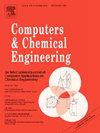Optimization models and heuristics for effective pipeline decommissioning planning in the oil and gas industry
IF 3.9
2区 工程技术
Q2 COMPUTER SCIENCE, INTERDISCIPLINARY APPLICATIONS
引用次数: 0
Abstract
Efficient operation sequencing is crucial in industrial processes to minimize delays and optimize resource utilization. This study focuses on the sequencing of operations for the recovery of decommissioned submarine pipelines, aiming to minimize project completion times. Unlike traditional sequencing problems, our approach incorporates unique constraints such as precedence relationships and the composition of trips for pipeline removal. We propose an optimization framework integrating a mathematical model and a hybrid solution that combines metaheuristic algorithms with exact methods for solving large-scale instances. Computational experiments were conducted on 40 instances of 100 pipelines each, randomly drawn from real-world data. The heuristic generated feasible initial solutions in all cases and enabled the mathematical model to find optimal solutions in 42.5% of the instances. However, in 35% of the cases, no feasible solutions were obtained within the time limit. For cases where the solver reached a solution, the average project completion time was 214.07 days, with a median of 0.0 and a standard deviation of 547.35 days. A real-world case study highlighted the practical applicability of the proposed approach. Using the constructive heuristic as the solver’s initial solution achieved the best result within 5000 s, with an objective function value of 9774 days. This work is particularly relevant in Brazil’s Oil and Gas industry, where deep-water flexible pipelines and strict environmental deadlines demand effective optimization models for decommissioning planning.
油气行业有效管道退役规划的优化模型与启发式方法
在工业过程中,高效的操作排序对于最小化延迟和优化资源利用至关重要。本研究的重点是退役海底管道回收的作业顺序,旨在最大限度地减少项目完成时间。与传统的排序问题不同,我们的方法包含了独特的约束条件,如优先关系和管道拆除的起下钻组成。我们提出了一个集成数学模型和混合解决方案的优化框架,该解决方案将元启发式算法与求解大规模实例的精确方法相结合。计算实验在40个例子中进行,每个例子有100个管道,随机从现实世界的数据中抽取。启发式算法在所有情况下生成可行的初始解,并使数学模型在42.5%的情况下找到最优解。然而,在35%的病例中,没有在时限内获得可行的解决方案。求解器解出的情况下,项目平均完成时间为214.07天,中位数为0.0,标准差为547.35天。一个现实世界的案例研究突出了所建议的方法的实际适用性。采用建设性启发式作为求解器的初始解,在5000s内获得最佳结果,目标函数值为9774天。这项工作与巴西的石油和天然气行业特别相关,在巴西,深水灵活的管道和严格的环境期限需要有效的退役规划优化模型。
本文章由计算机程序翻译,如有差异,请以英文原文为准。
求助全文
约1分钟内获得全文
求助全文
来源期刊

Computers & Chemical Engineering
工程技术-工程:化工
CiteScore
8.70
自引率
14.00%
发文量
374
审稿时长
70 days
期刊介绍:
Computers & Chemical Engineering is primarily a journal of record for new developments in the application of computing and systems technology to chemical engineering problems.
 求助内容:
求助内容: 应助结果提醒方式:
应助结果提醒方式:


